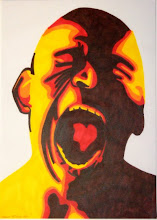Cache [opening] (Michael Haneke, 2005)
(Also an edited 'exam response' to (basically) the question: "Please analyze the opening scene of Cache (Michael Haneke, 2005) and discuss how the director disregards a typical cinematic language and how he goes about doing so)
Oh those french. They sure do know how to shake things up. Putting an Austrian in charge, well that's a confidently guaranteed shake. Haneke trumps several key conventions in the language of cinema within Cache, namely his vague regard for the viewer in the film's transmission of information. The titling, first, runs over the establishing shot in a paperback novel reading direction, printed in a small and difficult font that makes the credits of this film nearly illegible, (aside from the word Cache, that is,) the first hint that Haneke does not want to spoon feed you his narrative.
His initial shots leave it severely unclear whom (out of the dozen or so persons who meander through the shot[s]) is the subject of the narrative. Then, instead of modern film's inherent use of sound to thread both form and structure to a piece, Haneke lets off-screen dialogue, both diegetic and extracted in post, to drive the images without driving the narrative along as well. This sound and image relationship creates an almost completely disjointed form of dialogue. The revelation of the viewer's involvement in a "surveillance" in the late opening is as obvious a shock value method as Haneke's apparent rebellious test of form.
What to me really separates Haneke's structure of the cinematic language from the conventional comes from his reign over sound and its contrast with the emptiness of certain images. To elaborate on that reign would be redundant of the above paragraphs, so read this piece as a recycle sign (in a loop) and the thesis will become easily evident.
Subscribe to:
Post Comments (Atom)

No comments:
Post a Comment